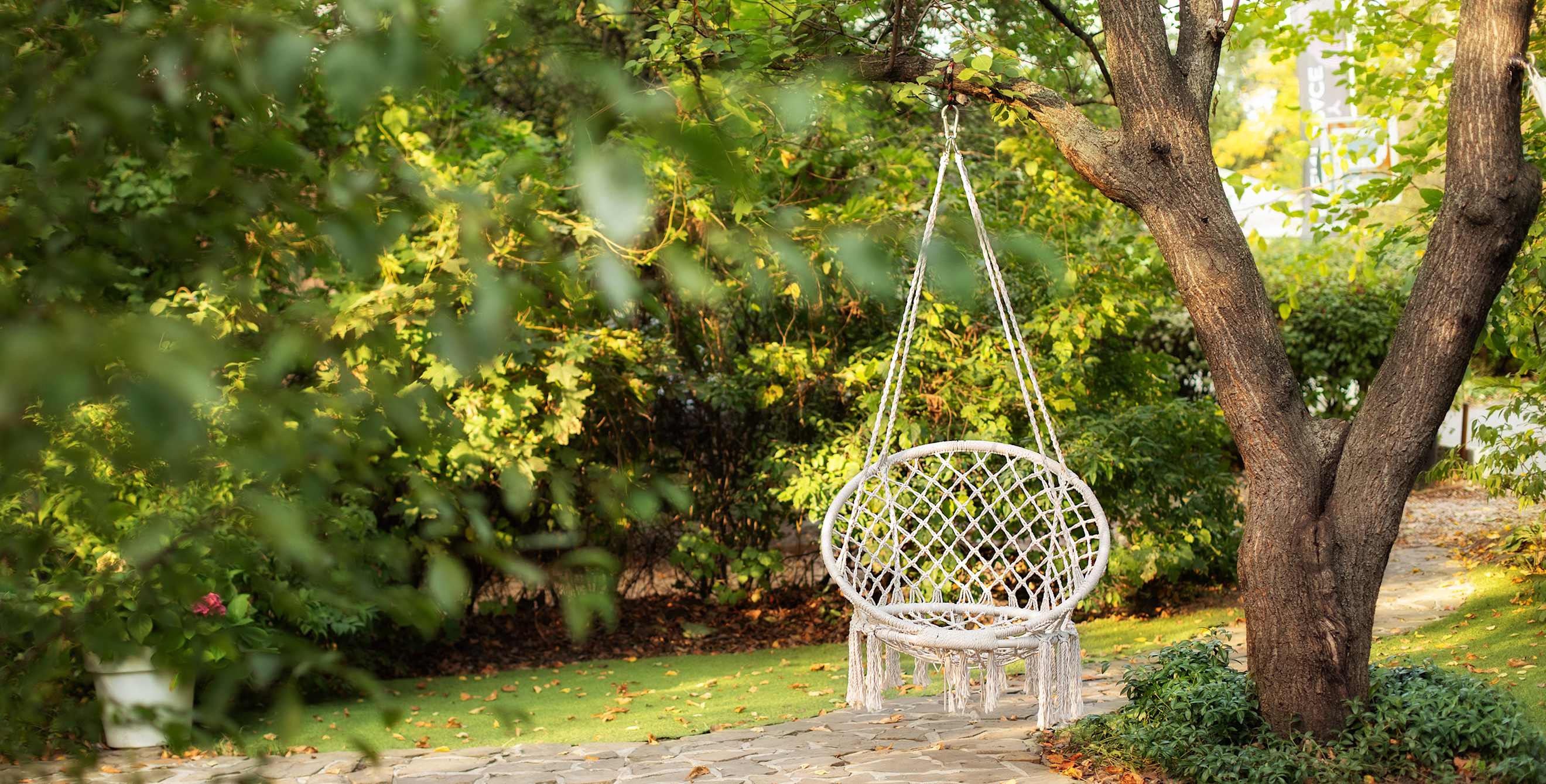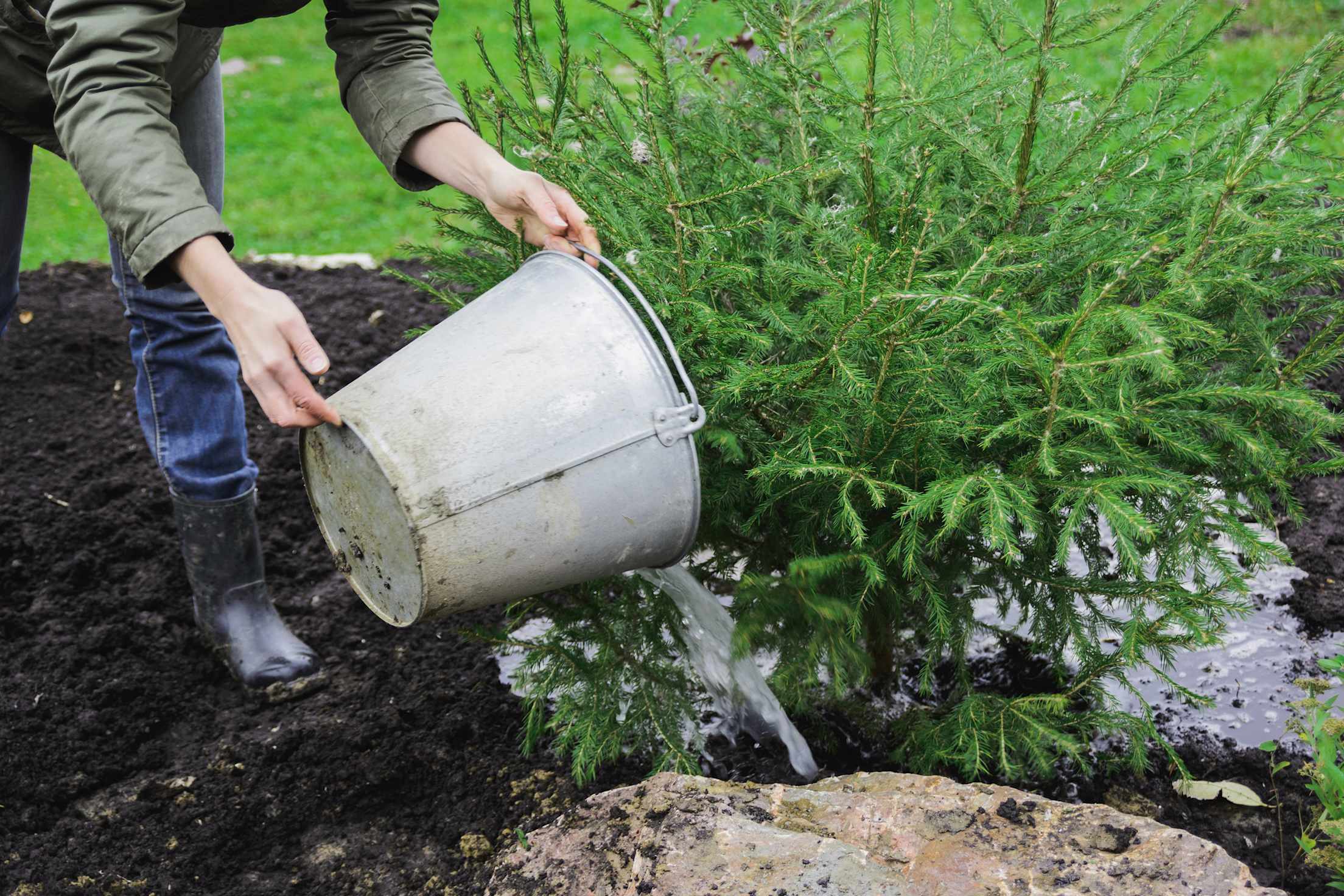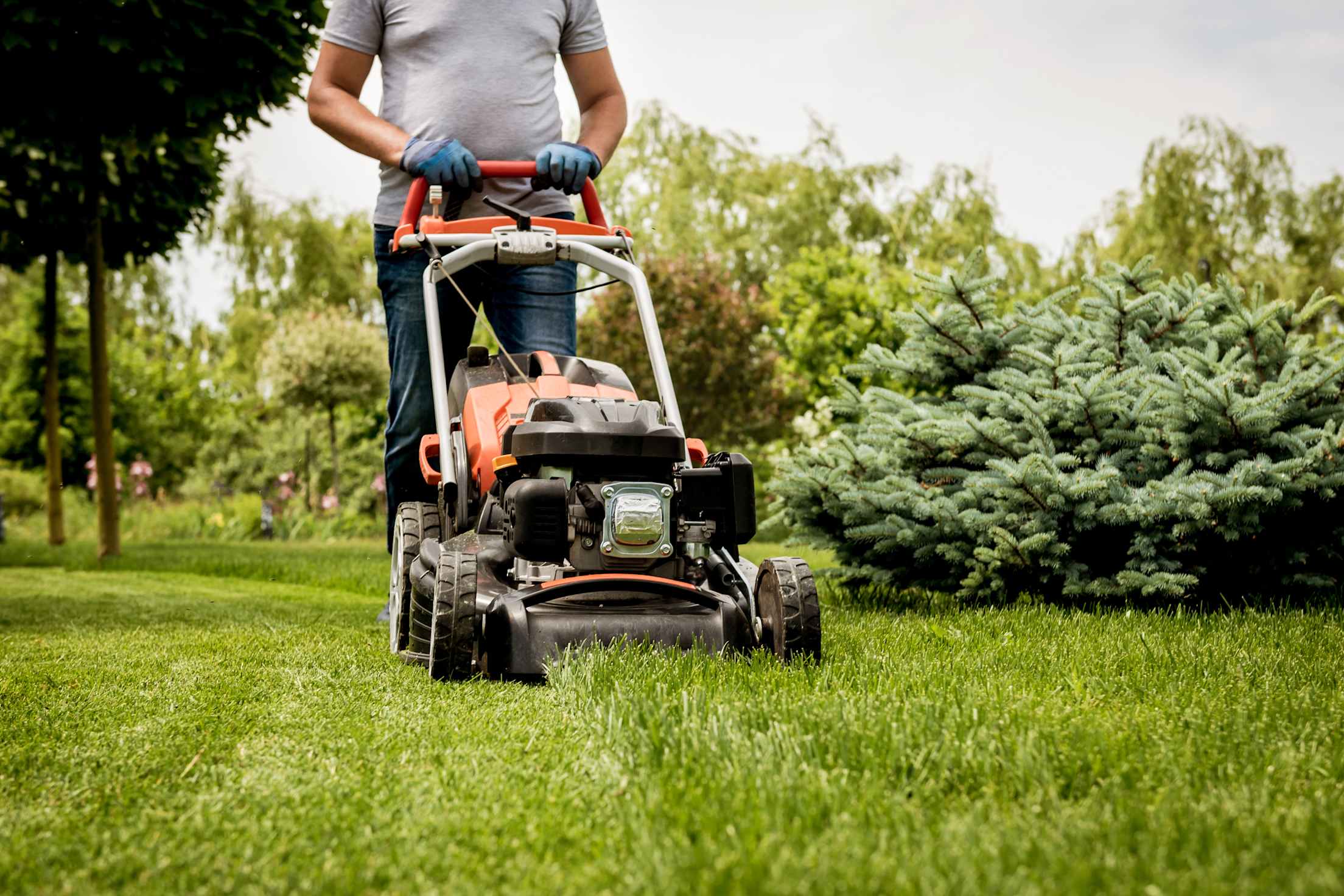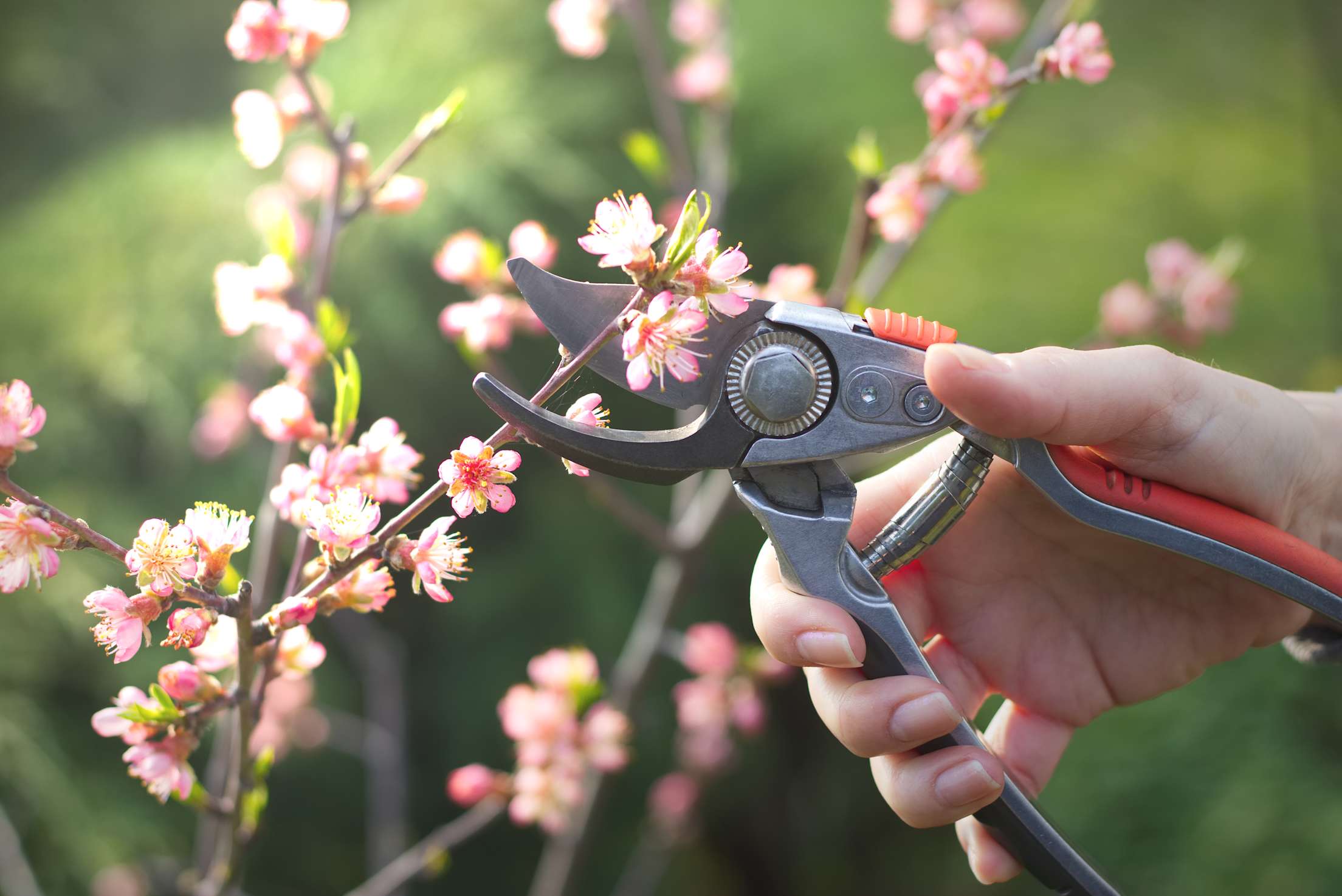
How to Care for Your Trees
Here's how to keep your trees healthy and thriving, from watering to pruning.

Trees are essential for life on Earth, and they make our lives and environment better. They clean the air, mitigate the effects of climate change, provide shade that can cool down entire neighborhoods, house pollinators, and ease the burden on storm water systems, just to name a few.
“They also contribute to human health,” says Sal Alvarez, tree care manager and International Society of Arboriculture (ISA)-certified arborist with Friends of the Urban Forest. Research shows trees reduce stress, speed up recovery for people in hospitals, and improve people’s performance at work and school. Plus, trees are gorgeous.
But in order to thrive, trees require TLC. From seedlings to steadfast stands older than the U.S. Constitution, here’s how to protect and care for the trees in your yard.
Get to know your tree.
If you’re planting a tree, choose wisely. “For homeowners who do not want to be overly involved in maintenance of their trees, [it’s] best to plant a native species,” says Margaret Lowman, executive director of TREE Foundation and author of The Arbornaut: A Life Discovering the Eighth Continent in the Trees Above Us. Other trees may be inappropriate for fire-prone areas. For example, eucalyptus trees burn as part of their reproductive strategy, and they shouldn’t be planted near homes in regions subject to fires, Lowman says.
Local nurseries, extension services, and urban forestry councils can help steer you toward appropriate species, and share insight on the best way to care for your trees, from watering needs to appropriate pruning.
Once you’ve chosen a tree, “plant it in a location that the tree can thrive,” says E.J. Cochrum, certified arborist and member of the Trees Matter board. Ask your local nursery about the conditions the tree needs, but also keep your space in mind. If your tree is surrounded by cement, it’s hard for water to make it to the roots, Lowman points out. “As a rule of thumb, tree roots extend as far out from the trunk as the canopy, so make sure you don’t starve your tree by surrounding it with a patio or driveway,” she says.
For trees already on your property, you can get information on their specific needs from the International Society of Arboriculture, the Arbor Day foundation, your local county extension, or your state forest services, Cochrum says.

Give trees the water they need.
“The first couple of years of a tree’s life will affect its shape, structure, and even its lifespan,” Cochrum says. Trees that are up to five years old qualify as young, and require 15 to 20 gallons of water a week, Alvarez says. It’s not enough to sprinkle water from your hose for a few minutes each day. Instead, establish a deep watering system to filter hydration through the soil for several hours, which encourages roots to grow deep and find groundwater. In regions that experience extended rainy seasons, you may be able to skip watering trees, even younger ones, during wet stretches.
To create a deep watering system, you can use a 5 gallon bucket with a ⅛-inch hole drilled in the bottom or purchase a watering bag that holds up to 20 gallons from your local garden supply store. Use your hose to fill the bucket or bag once a week; the tiny hole in both allow the water to drain over several hours and soak down instead of spreading out on the surface. A soaker hose or an automated drip irrigation system are also solid watering strategies.
More mature trees typically require weekly watering as well—more during hot temperatures, Cochrum says. A tree’s specific watering needs vary depending on the soil type, heat levels, and the tree’s species and age.
Even during droughts and when water use is restricted, watering trees is typically allowed and considered important. After all, trees provide shade, which can reduce energy use in your home and keep the rest of your garden from drying out as severely. Plus, without hydration, they’ll perish (particularly younger trees), and unlike a lawn or flowerbed, replacing a tree takes a significant amount of time.
Be smart about your water usage, particularly during a drought. Time watering to early morning or late in the day (after the sun’s down) so the tree can absorb the most water, without it evaporating. Mulching around the tree also helps prevent evaporation.
Smart tip: Use gray water, such as the water that runs while you heat up your shower or that you use to clean your produce—to water your trees.

Protect trees when mowing or gardening.
Don’t let caring for the rest of your outdoor space infringe on your tree’s health. “Mowing and weed eating can cause significant damage and injury to the trunk of the tree,” Cochrum points out. “The shape edge of the mower deck and the line from the weed eater cuts into the bark,” he says, which can lead to disease and eventually death.
To keep your tree safe, opt for mulch instead of grass in a two- to three-foot radius around the tree, Cochrum recommends. Another solution: Wrap a towel or blanket around the trunk and secure it with a bungee cord to provide a protective barrier while working, Alvarez says.
Trim carefully during the right time.
Time any cutting to the season. “An easy way for people to remember the best time to trim a tree is when the leaves start to change in the fall and when they start to bloom in the spring,” Cochrum says. If you have to cut outside of the fall and spring, don't remove more than 25 percent of the tree's foliage.
When trimming, use sharp, clean tools, Alvarez recommends. To avoid spreading disease from tree to tree, sanitize your tools. “Fill a little spray bottle with [rubbing] alcohol and spray your tools down between each tree,” Alvarez says.
If you’re going to prune your tree, do research first or rely on an expert to ensure you do so safely and don’t inadvertently harm the tree.
Smart tip: Depending on where you live, street trees—those planted in the public right of way, typically near or between the sidewalk and the street—may require a permit to prune or trim. Check with your local government before cutting.

Plan ahead for extreme conditions.
Weather can be hard on trees. Here are a few things to keep in mind to help your tree survive:
- Be smart about water. Give trees a deep watering, without overwatering, Cochrum says. Water in the early morning and mulch around the base of the tree to help the soil retain moisture. Water young trees, so they don’t perish, Alvarez says. Prioritize watering trees over your lawn or other landscaping if there are water-use restrictions or drought.
- Press pause on fertilizing in high heat seasons. If your soil is low in nutrients (which you can test by sending a sample to a lab or your local county extension services) or if your tree is surrounded by concrete or a planter, fertilizing may be needed. If you are fertilizing, do so in early spring. “When temperatures get hot, like they do here in the Phoenix area, trees won’t absorb nutrients,” Cochrum notes. Plus, when trees are low on water, the fertilizer can burn the roots. Most mature trees don’t require fertilizer.
- Skip pruning, too. This is taxing for trees, and best avoided during extreme temperatures, if possible.
- Don’t stake trees too firmly during high winds. “It is often people's instinct to strap the tree down as tightly as they can to restrict movement. But this is actually the opposite of what needs to be done,” Alvarez says. If your tree is exposed to frequent high winds, loosely stake it in a triangle shape with a tie made from soft, flexible polypropene, Alvarez advises. When you are done, the tie should be slack on a windless day rather than pulled tight against the stakes and trunk. For most trees, it’s best to skip staking, even for young trees, to ensure the roots develop properly and can support the tree as it grows.
- Remove lower branches. When it comes to wildfire mitigation, it is important to remove lower branches to prevent them from drawing fire up into the crown of the tree, Alvarez says.
Smart Tip: “It also never hurts to consult your city's arboriculture program because they also might be able to offer free advice, especially when it comes to wildfire safety,” Alvarez says.
Know what’s covered by your insurance.
Even with the best care, things can go wrong. But your home insurance will almost always cover damage to your home or structures when a tree or limb falls on it. If a tree damages your car, your auto insurance will cover the repairs if you have comprehensive coverage. The coverage amount depends on your policy. If your tree damages a neighbor’s property, their insurance will cover the expense. However, if you knew your tree was a threat and it can be proven that you knew, you could be held liable for the damage it does.

Check on your trees routinely.
Aim to have “a general idea at any given point of how your tree is doing and how the tree is growing,” Alvarez says. Give your tree a once over visually once or twice a month. Here’s what to keep an eye out for:
- Trunk: Look for bark damage, such as cracking or peeling, Cochrum says. Small holes are a potential sign of insects.
- Problem-causing insects: Small round bugs suctioned onto leaves are known as scales, Alvarez says. They can weaken a tree.
- Insects: “If you see ants anywhere on your tree, it's a good rule of thumb that you probably have something else,” Alvarez says—the ants are munching on other insects or fungus.
- Leaves: Look up at the tree’s canopy—brown spots on leaves or leaves that are falling too soon could be a sign of problems, Cochrum says. Signs of powdering could be mildew, Alvarez notes.
- Branches: Check for branches that are broken, cracked, growing fungus, or missing bark, which could be a sign of ill health.
Once you’ve identified symptoms, the internet can be a great resource for helping you figure out holistic options to treat things like aphids or scales, Alvarez notes. Experts can also help. “If you see any of these signs or if you’re just not sure what to do, do not hesitate to call an arborist,” Cochrum says.